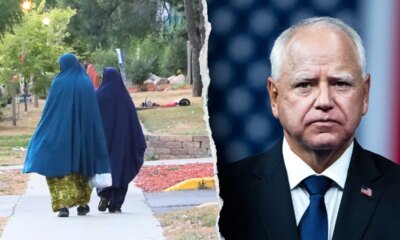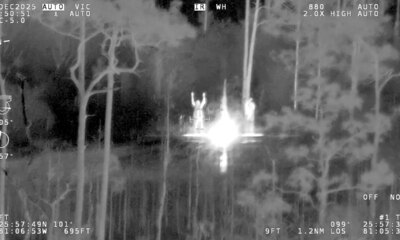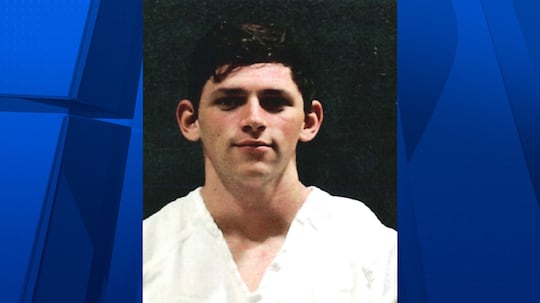Arizona
Heritage Foundation celebrates National School Choice Week with documentary focused on Arizona communities

FIRST ON FOX: The Heritage Foundation is renewing its push for better educational opportunities in the United States with a mini-documentary celebrating school choice and the impact it has made on students.
The documentary, which was released in accordance with National School Choice Week, features comments from parents, educators and children about how school choice has had an effect on them and their communities in Arizona – one of the first states to champion school choice.
In 1997, Arizona became the first state to offer tax-credit scholarships, and in 2011 it became the first state to offer K–12 education savings accounts (ESAs).
Titled “Making the Grade,” the documentary profiles four faith-based schools in Arizona to see the difference that education choice policies make for the families they serve.
SCHOOL CHOICE ADVOCATE BLASTS NEA-BACKED NETWORK OVER TOOLKIT LABELING VOUCHER PROGRAMS AS RACIST
National School Choice Week (Getty Images)
“Our mission is to partner with families in nurturing their children for academic and spiritual growth,” said Amanda Bennett, the co-founder of Arcadia Christian School. “We have 120 students in our school – preschoolers all the way through sixth grade.”
“The unique thing about our school is that we’re a hybrid model, which means that we’re a blend between homeschool and at-school learning,” Bennett added.
Alex Thompson, a parent and teacher who was featured in the video, said she has taught online and at a public school in the past but that her experience teaching at Arcadia Christian School has been a “night and day difference.”
“I think the biggest difference is I’m able to give my students the time and energy they need because I only have 15 kids,” Thompson said.
Bennett said she believes the use of ESAs has “enabled” her school to “exist this year and thrive.”
The difference school choice has made for Highlands Latin School was also shown in the video.
“ESA has made it possible for us to be in this school,” said one Highlands Latin parent.
The impact of school choice can also be seen at Pusch Ridge Christian School in Tucson.
“The mission of the school is to teach kids to become like Christ through a classical Christian education within a covenantal community – we just do it in Spanish,” said Jonathon Basurto, the principal at Pusch Ridge Christian School.
“We feel that the public school was lacking in educating the children nowadays, and we wanted something better for our daughter,” said Maria Gomez and Daniel Trujillo, whose daughter attends Pusch Ridge. “Our daughter has flourished here. She loves coming to school. When she’s on vacation she misses being here.”
The Torah Day School of Phoenix has also benefited from unfettered school choice options for parents in the Grand Canyon State.
SCHOOL CHOICE GIVES PARENTS THE POWER TO BREAK TEACHERS UNIONS’ CHOKEHOLDS ON STUDENTS: COREY DEANGELIS
“Torah day school was founded in 2010. We started with seven kids. It was actually started in my house. Thanks to really the policies in Arizona, we’ve grown tremendously … we now have over 400 [students],” said Gaby Friedman, a founding board member for the school.
Lindsey Burke, the director of the Center for Education Policy at the Heritage Foundation, said the steps Arizona has taken in its mission to uphold the best educational standards for children could help other states who are looking to follow suit. (iStock)
“Most of the students who come to our school come from low-income families, so we have a lot of students who are able to receive the corporate tax credit scholarship from Arizona, and we also have children who are also receiving an ESA,” Friedman added. “We never wanted to turn a child away because their parents couldn’t pay anything. Thanks to the policies in Arizona, we have been able to maintain that open-door policy.”
Speaking to Fox News Digital about the mission to get school choice in every state, Lindsey Burke, the director of the Center for Education Policy at the Heritage Foundation, said the steps that Arizona has taken in its mission to uphold the best educational standards for children could help other states who are looking to follow suit.
CHICAGO TO MOVE AWAY FROM SCHOOL CHOICE, CENTER NEIGHBORHOOD SCHOOLS TO RECTIFY ‘STRUCTURAL RACISM’
Arizona’s decision to “adopt education savings accounts,” Burke said, shows that it recognizes “parents are their children’s first and primary educators.”
Referring to ESAs as the “iPhone of school choice,” Burke said parents and students can use an ESA to “not only pay for private school tuition but to also hire a private tutor or purchase textbooks, buy curricula and roll over unused funds year to year.”
“This is an amazing way to provide families access to their child’s share of the money that would have been spent on them in the public school,” she said. “In Arizona, you get 90% of what would have been spent on your child in the public school. It literally goes on to a debit card that you control, and then you can pay for all of those things I just mentioned. It’s an incredible way to think about the public financing of education.”
Burke said ESAs, or some form of them, are now being used in a total of 14 states.
Arizona, according to Burke, kept regulations “appropriately light” and allowed for more opportunities to flow in the state.
Burke said education savings accounts, or some form of them, are now being used in a total of 14 states. (Getty/skynesher)
SCHOOL CHOICE IS THE RIGHT ANSWER FOR A ‘FREE, DIVERSE, EQUAL, SOCIETY:’ NEAL MCCLUSKEY
Because of Arizona’s steadfast approach to giving students and parents in the state school choice options, the state ranks second behind Florida on the Heritage Foundation’s Education Freedom Report Card.
The report card, which features a ranking for each state, measures four categories – Education Choice, Teacher Freedom, Transparency, and Return on Investment – that encompass more than two dozen discrete factors.
Despite support for school choice from many different corners of America, some in Arizona, including the state’s Democrat Gov. Katie Hobbs, question the school voucher program’s value.
The voucher program – championed by Hobbs’ GOP predecessor, Gov. Doug Ducey – allows students to apply to use public money for private-school tuition and other education costs. It started in 2011 as a small program for disabled children but was repeatedly expanded over the next decade until all students became eligible in 2022. More than 73,000 students currently participate in the program. Critics say the expansion is a drain on the state’s coffers and is subsidizing private school tuition, but backers say the expansion lets parents choose the best school for their children.
Arizona Democratic Gov. Katie Hobbs said she and her administration had seen a “steady stream of news coverage around unacceptable and sometimes downright outrageous use of taxpayer money” under the state’s school voucher program. (AP Photo/Ross D. Franklin/File)
CLICK HERE TO GET THE FOX NEWS APP
Earlier this month, Hobbs said that she and her administration had seen a “steady stream of news coverage around unacceptable and sometimes downright outrageous use of taxpayer money” under the voucher program – pointing to things like “water park admissions, ski passes, and luxury car-driving lessons.”
Hobbs has also proposed requiring Arizona students to attend public school for 100 days before becoming eligible for the voucher program. Doing away next year with school tuition organizations that funnel tax credits to students for private school tuition could be another money-saving measure to the tune of $185 million, Hobbs’ office estimated.
The Associated Press contributed to this report.

Arizona
Arizona Lottery Pick 3, Fantasy 5 results for Dec. 11, 2025

Odds of winning the Powerball and Mega Millions are NOT in your favor
Odds of hitting the jackpot in Mega Millions or Powerball are around 1-in-292 million. Here are things that you’re more likely to land than big bucks.
The Arizona Lottery offers multiple draw games for those aiming to win big. Here’s a look at Thursday, Dec. 11, 2025 results for each game:
Winning Pick 3 numbers
5-2-5
Check Pick 3 payouts and previous drawings here.
Winning Fantasy 5 numbers
08-10-23-28-33
Check Fantasy 5 payouts and previous drawings here.
Winning Triple Twist numbers
04-14-19-36-37-38
Check Triple Twist payouts and previous drawings here.
Feeling lucky? Explore the latest lottery news and results
What time is the Powerball drawing?
Powerball drawings are at 7:59 p.m. Arizona time on Mondays, Wednesdays and Saturdays.
How much is a Powerball lottery ticket today?
In Arizona, Powerball tickets cost $2 per game, according to the Arizona Lottery.
How to play the Powerball
To play, select five numbers from 1 to 69 for the white balls, then select one number from 1 to 26 for the red Powerball.
You can choose your lucky numbers on a play slip or let the lottery terminal randomly pick your numbers.
To win, match one of the 9 Ways to Win:
- 5 white balls + 1 red Powerball = Grand prize.
- 5 white balls = $1 million.
- 4 white balls + 1 red Powerball = $50,000.
- 4 white balls = $100.
- 3 white balls + 1 red Powerball = $100.
- 3 white balls = $7.
- 2 white balls + 1 red Powerball = $7.
- 1 white ball + 1 red Powerball = $4.
- 1 red Powerball = $4.
There’s a chance to have your winnings increased two, three, four, five and 10 times through the Power Play for an additional $1 per play. Players can multiply non-jackpot wins up to 10 times when the jackpot is $150 million or less.
Are you a winner? Here’s how to claim your lottery prize
All Arizona Lottery retailers will redeem prizes up to $100 and may redeem winnings up to $599. For prizes over $599, winners can submit winning tickets through the mail or in person at Arizona Lottery offices. By mail, send a winner claim form, winning lottery ticket and a copy of a government-issued ID to P.O. Box 2913, Phoenix, AZ 85062.
To submit in person, sign the back of your ticket, fill out a winner claim form and deliver the form, along with the ticket and government-issued ID to any of these locations:
Phoenix Arizona Lottery Office: 4740 E. University Drive, Phoenix, AZ 85034, 480-921-4400. Hours: 7:30 a.m. to 5 p.m. Monday through Friday, closed holidays. This office can cash prizes of any amount.
Tucson Arizona Lottery Office: 2955 E. Grant Road, Tucson, AZ 85716, 520-628-5107. Hours: 7:30 a.m. to 5 p.m. Monday through Friday, closed holidays. This office can cash prizes of any amount.
Phoenix Sky Harbor Lottery Office: Terminal 4 Baggage Claim, 3400 E. Sky Harbor Blvd., Phoenix, AZ 85034, 480-921-4424. Hours: 8:30 a.m. to 5 p.m. Monday through Sunday, closed holidays. This office can cash prizes up to $49,999.
Kingman Arizona Lottery Office: Inside Walmart, 3396 Stockton Hill Road, Kingman, AZ 86409, 928-753-8808. Hours: 8 a.m. to 8 p.m. Monday through Friday, 8:30 a.m. to 5 p.m. Saturday and Sunday, closed holidays. This office can cash prizes up to $49,999.
Check previous winning numbers and payouts at https://www.arizonalottery.com/.
Winning lottery numbers are sponsored by Jackpocket, the official digital lottery courier of the USA TODAY Network.
Where can you buy Arizona lottery tickets?
Tickets can be purchased in person at gas stations, convenience stores and grocery stores. Some airport terminals may also sell lottery tickets.
You can also order tickets online through Jackpocket, the official digital lottery courier of the USA TODAY Network, in these U.S. states and territories: Arizona, Arkansas, Colorado, Idaho, Maine, Massachusetts, Minnesota, Montana, Nebraska, New Hampshire, New Jersey, New York, Ohio, Oregon, Puerto Rico, Washington D.C., and West Virginia. The Jackpocket app allows you to pick your lottery game and numbers, place your order, see your ticket and collect your winnings all using your phone or home computer.
Jackpocket is the official digital lottery courier of the USA TODAY Network. Gannett may earn revenue for audience referrals to Jackpocket services. GAMBLING PROBLEM? CALL 1-800-GAMBLER, Call 877-8-HOPENY/text HOPENY (467369) (NY). 18+ (19+ in NE, 21+ in AZ). Physically present where Jackpocket operates. Jackpocket is not affiliated with any State Lottery. Eligibility Restrictions apply. Void where prohibited. Terms: jackpocket.com/tos.
This results page was generated automatically using information from TinBu and a template written and reviewed by an Arizona Republic editor. You can send feedback using this form.
Arizona
Fruit-flavored cocaine being sold to young people, Arizona official warns

PHOENIX (AZFamily) — Arizona’s attorney general is sounding the alarm over a new illegal drug being marketed toward kids and young women.
The Attorney General’s Office says law enforcement agencies in Arizona are seeing an increase of fruit-flavored cocaine in the illegal drug market.
Attorney General Kris Mayes says dealers are marketing the flavored drug toward younger people and women, attempting to lure new users to using cocaine.
Mayes said the drug is being sold in flavors like piña colada, strawberry, coconut and banana, which may appeal to children. She added that illegal drugs like cocaine often contain the deadly drug fentanyl.
“We want everyone to stay safe and avoid the harms that come from using illegal drugs,” Mayes said.
The warning from the AG’s office comes after a man was sentenced in Pima County last month for selling fruit-flavored cocaine.
A release from Mayes’ office says that on July 17, Jaden Alfredo Covarrubias sold about 1.55 pounds of cocaine to another person after advertising his access to coconut, strawberry and banana flavored forms. Mayes said Covarrubias offered to sell the drugs on social media platforms like WhatsApp.
Covarrubias was sentenced on Nov. 24 to 1.75 years in prison. He was ordered to pay $4,500 to the State Anti-Racketeering Revolving Fund and $300 for investigative costs to the Arizona Department of Public Safety.
See a spelling or grammatical error in our story? Please click here to report it.
Do you have a photo or video of a breaking news story? Send it to us here with a brief description.
Copyright 2025 KTVK/KPHO. All rights reserved.
Arizona
Volunteer pilots bring Santa, gifts to Title I schools on Utah-Arizona border

COLORADO CITY, Ariz. — Santa Claus traded his sleigh for small planes Wednesday as 20 volunteer pilots from Angel Flight West’s Utah wing flew hundreds of miles to deliver Christmas gifts and school supplies to two Title I schools on the Utah-Arizona border.
The annual “Santa Flight” brought toys, winter coats, backpacks and more than 500 books donated by PBS Utah to about 500 students from Water Canyon Elementary in Hildale, Utah, and Cottonwood Elementary in Colorado City, Arizona. The schools gathered at the Colorado City airport to greet Santa, Mrs. Claus, some elves and the pilots.
“Well, this is just excitement,” said Brad Jolley, principal at Water Canyon Elementary in Hildale. “I mean, you look at the faces of the kids, you see smiles, and just a great opportunity, great atmosphere.”
“This is the first time that our two schools in our valley have come together and done an activity,” said Natalie Hammon, principal at Cottonwood Elementary in Colorado City. “So Santa Flight has really helped us unite our valley and let our two schools work together for a great cause.”
The donations were made possible by community groups and sponsors, including the John C. Kish Foundation, Bank of Utah and the Leavitt Group. Lou Rossi, Utah Wing leader for Angel Flight West, said the effort reflects the generosity of pilots and donors during a tough economic time.
Angel Flight West is best known for providing free air transportation for patients traveling long distances for medical care. Volunteer pilot Steve Booth said the holiday mission is just one way to give back.
“For somebody that might need a four- or five-hour car ride after a cancer treatment, a 45 (-minute) or one-hour flight just makes a huge, huge difference in their life,” Booth said.
The Santa Flight tradition began in 2000 and rotates among rural schools each year.
The Key Takeaways for this article were generated with the assistance of large language models and reviewed by our editorial team. The article, itself, is solely human-written.
-

 Alaska6 days ago
Alaska6 days agoHowling Mat-Su winds leave thousands without power
-

 Politics1 week ago
Politics1 week agoTrump rips Somali community as federal agents reportedly eye Minnesota enforcement sweep
-
Ohio1 week ago
Who do the Ohio State Buckeyes hire as the next offensive coordinator?
-

 Texas6 days ago
Texas6 days agoTexas Tech football vs BYU live updates, start time, TV channel for Big 12 title
-

 News1 week ago
News1 week agoTrump threatens strikes on any country he claims makes drugs for US
-

 World1 week ago
World1 week agoHonduras election council member accuses colleague of ‘intimidation’
-

 Washington3 days ago
Washington3 days agoLIVE UPDATES: Mudslide, road closures across Western Washington
-

 Iowa5 days ago
Iowa5 days agoMatt Campbell reportedly bringing longtime Iowa State staffer to Penn State as 1st hire




















